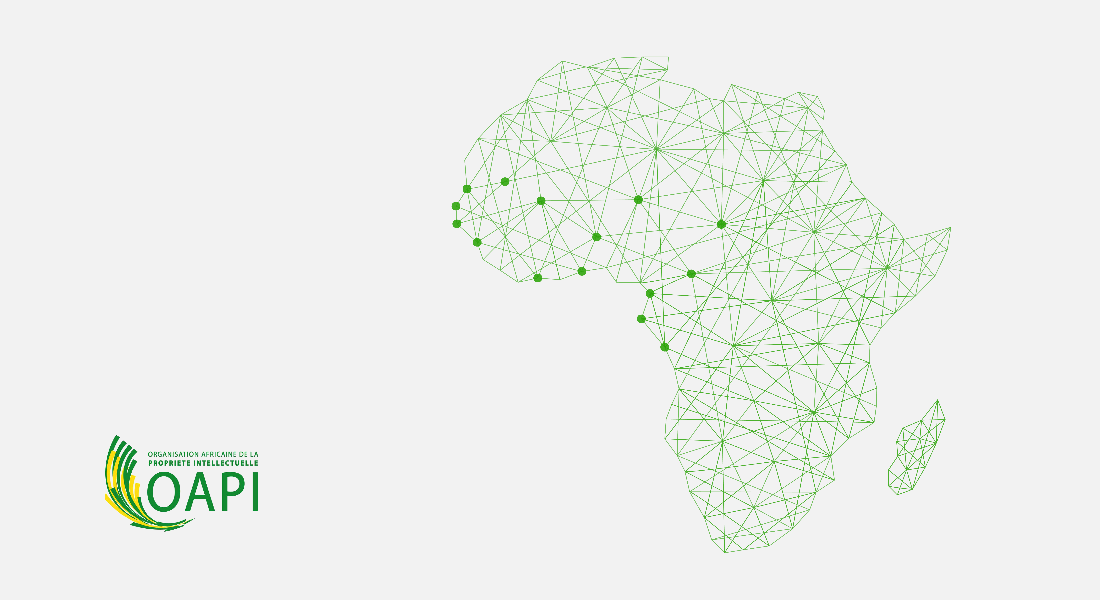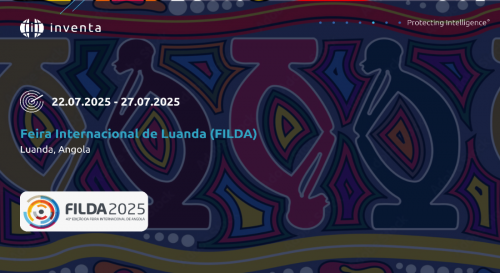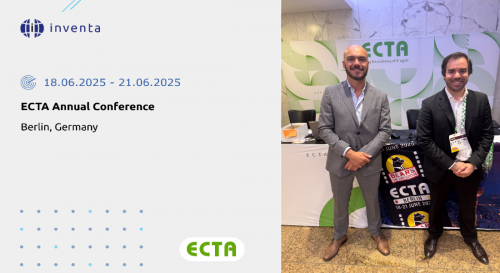
Bangui Agreement: A Summary of The Essential Changes
In March 1977 the Bangui Agreement (hereinafter, also referred to as “Agreement”) created OAPI, the Organisation Africaine de la Propriété Intellectuelle (African Organization of Intellectual Property). OAPI is an organization mainly composed of francophone jurisdictions, namely: Benin, Burkina Faso, Cameroon, the Central African Republic, Chad, the Comoro Islands, Congo, Côte d’Ivoire, Equatorial Guinea, Gabon, Guinea, Guinea-Bissau, Mali, Mauritania, Niger, Senegal, and Togo. The main purpose of its creation was to encourage member states to collaborate, build networks and share common resources. The benefit of filing through the regional system is the possibility of obtaining protection for Industrial Property assets in several countries at the same time, through a single and uniform filing procedure which, of course, reduces the overall costs of said procedure and the time frame to obtain protection. In the Bangui Agreement preamble, it is stated «(…) Considering the importance of creating a body responsible for applying common procedures deriving from a uniform system for the protection of intellectual property and to promote training and the dissemination of knowledge in intellectual property».
The Organization acts as a single jurisdiction, OAPI member states do not have Intellectual Property Institutes. Therefore, registration is only possible through the Regional System. This is one of the main differences between OAPI and ARIPO (the African Regional Intellectual Property Organization), another intellectual property regional system of Africa, where the member states for which an applicant intends to obtain protection have to be designated, not acting as a single jurisdiction in itself.22
In January 2022, a revised version of the Bangui Agreement has entered into force in OAPI. The revision has introduced some significant changes to the agreement in which trademark and patent procedures are concerned and minor changes in what trade names and industrial designs are concerned. In this article, we will focus on the changes made to patents, trademarks, and the introduction of revisions concerning Geographical Indications. Without prejudice, it is important to mention that Annex III pertaining to trademarks has come into force on 1 January 2022 however Annex I pertaining to Patents, will come into force in 2023.
Annex I of the Bangui Agreement regards patents. The main changes observed concern substantive examination, opposition before grant, and divisional applications.
The substantive examination has been introduced to the proceedings, whereas before only formal examination was performed. The substantive examination conducted by the OAPI Institute of Intellectual Property will confirm: 1) if the subject matter of the invention is not excluded from protection (inventions whose exploitation is contrary to public policy or morality, methods for treatment of the human or animal body by surgery or by therapy which includes diagnostic methods, inventions on plant varieties, animal species and biological processes for the breeding of animals or plants other than microbiological processes and the products of such processes – Article 2 of the Agreement); 2) if there is a unity of invention, according to Article 17 of the Agreement; 3) if the claims are consistent with the formalities provisioned by article 13 of the Agreement («[must provide] a sealed envelope containing the following (…) any claim or claims defining the scope of the protection sought, which shall not exceed the contents of the specification (…)»).
The Opposition mechanism is also new to patent procedures in OAPI. The Bangui Agreement revisions have introduced the procedure in its Article 20. The same stipulates that after the publication of the application, there is a period of three months where any person may oppose the grant of a patent or a certificate of addition. The opposition must be submitted in writing format and the reason for the opposition shall be clearly stated to the Organization. The grounds for opposition shall be based on the infringement of Articles 1 (which defines what is considered an invention), Article 2 (which defines the scope for patentability), Article 3 (novelty), Article 4 (inventive step), Article 5 (industrial applicability), Article 9 (right to the invention) and 17 (unity of invention) or on the grounds of an existing prior registration right held by the opposing party. The applicant shall be served the notice of opposition having three months (with an extension of one month) to refute the opposition and defend the invention. Before ruling on the opposition, the Organization will set a hearing with both parties or their legal representatives.
Lastly, in what concerns Annex I (patents), Divisional Applications are now provided in Article 22 of the Agreement. A divisional application is a type of patent application that contains subject matter related to a different patent application from the same applicant. Frequently patent applications lack unity of invention meaning that their scope may comprise more than one invention and the inventor/applicant or the applicant is required to split the application into one or more divisional applications. The Agreement stipulates that an initial patent application can be divided into several applications provided that the following timings are met: the split must be performed a) at least until the decision on the grant of the patent; b) during any examination, opposition, or claim of ownership proceedings; c) during any appellate proceedings concerning the decision on the claim of ownership. The Article provides that the divisional application retains the filing date of the parent-application and, if applicable, the right of priority.
Annex III of the Bangui Agreement regards trademarks. These provisions in what trademarks are concerned have undergone the most relevant changes. Firstly, Article 2 c) and d) expands the previous definition of a trademark to also include sound and audiovisual trademarks. Additionally, collective certification trademarks are now provisioned (Article 42 et seq).
Before the present revision, one application for the registration of a trademark could not include goods and service classes, which does not mean that multiclass applications were not allowed. For instance, if an applicant wanted to seek protection for a sign in classes 4, 36, and 37, two different applications had to be filed (one for the goods classes – 4; and the other for the service classes – 36 and 37). Goods and Services classes were separated by applications. This provision often led to unnecessary duplication of charges, even if the application fees included up to three classes (of goods or of services, not both). This is a major change for OAPI. Applicants can now file trademarks for goods and services classes in the same application.
The opposition proceedings have also been revised, although changes have not been made to include substantive examination (trademarks will still not be examined for relative grounds). Previously, the procedure in OAPI was that the trademark was examined as to the formalities, the registration certificate was issued and sent to the applicant, and only then was the application published for opposition purposes (six-month period counting from the publication), if the opposition period ran smoothly, the registration would then become definitive. In the revised Bangui Agreement, namely in its Article 15, it is stipulated that the trademark shall be first published beginning the first period of 3 months for any person to oppose the application from the publication date. The trademark will then be granted (if it complies with the Agreement’s requirements and no opposition is filed against it) and the registration shall be published once again, however, the Office shall not allow for the submission of oppositions in the pos-grant period. In practice, it means that the opposition period was shortened from 6 to 3 months counting from the publication date.
Divisional trademark applications were also introduced in Article 17 of the Agreement, which means that a trademark can be divided by the applicant into several trademark applications, this mechanism may be useful for applicants, especially in those cases in which the trademark cannot be granted in one or more classes because there was an objection against it, however, there are classes for which no objection was raised. This allows the applicant to harness part of the application that was not challenged. The request for a divisional application must be made a) at least until the decision on the registration of the mark is completed; b) during any proceedings for opposition or claim of ownership of the mark or; c) during any appellate process concerning the decision on the opposition or the claim of ownership.
In addition, a prescription term of five years was stipulated for civil action related to infringement, according to Article 70 of the Agreement.
Article 9 of the Bangui Agreement provisions the designation of OAPI in International Applications under the Madrid Protocol, which essentially means that the same has been formally accepted in OAPI. Without prejudice, it is important to state that Madrid Protocol has not been ratified by all member states of OAPI (i.e. Senegal), which means that a grey area remains in what international trademarks are concerned. Our advice to applicants continues to be that of preferring national applications over international applications designating OAPI.
OAPI accepts trademark applications for products, services, collective trademarks, and collective certification trademarks, as well as protecting well-known marks in the region. To file a simple application, applicants must provide: the full name and address of the applicant; a sample of the mark if it is a device mark; a list of the goods and/or services in accordance with the Nice Classification (11th).
An important revision involved customs proceedings against counterfeiting. Article 77 stipulates new border measures. The custom administration, upon written application by any person, if they provide proof of their right, can detain goods suspected to be counterfeited when conducting controls. The detention measure shall be lifted ipso jure within 10 working days of the notification of detention of the goods if the applicant fails to provide proof to the customs services of either the interim measures or of their application to the competent domestic court (either criminal or civil) and their provision, when applicable, of the requisites to provide guarantees to cover any responsibility they may incur where the alleged counterfeiting is ultimately not found to exist, according to Article 77 no. 3), a) and b). This essentially means that after detaining the suspected goods the exclusive right holder has ten working days to act upon the customs detention or seizure. For goods that are perishable commodities, the time frame is shortened, and the applicants have only 3 working days to act upon the detention/seizure.
Annex VI of the Bangui Agreement relates to Geographical Indications. Finally, the revisions to the Bangui Protocol resulted in amendments to Geographical Indications. Article 1 of Annex VI defines Geographical Indications as «(…) an indication that serves to identify a product as originating from a place, a region, or a country, in those cases where the quality, reputation, or other specific characteristics of the product may be essentially attributed to such geographical indication». Article 3 stipulates that trademarks containing or imitating geographical indications shall be refused or invalidated if their use will likely mislead the public as to the true place of origin. Geographical Indications are excluded from protection in OAPI if they do not meet the definition of Article 1 referred above, if they are contrary to public policy or morality and if the indications are not protected in their country of origin or have ceased to be protected in said country. In order to obtain protection for Geographical Indications, the applicant shall provide specifications containing: a suitable power of attorney; full name and address of the applicant; the name of the producer (farmers or any other person exploiting natural products, manufacturers of products of craft or industry, processers of natural or agricultural products and any person who trades such products); the type of product; the specifications of the product (setting out, in particular, the quality, reputation or other characteristics of the products or which the indication is used); the delimitation of the geographical area; the breeding method; the link to the origin; the inspection plan and; the labeling.
The Revisions to the Bangui Agreement have also focused on the modernization and digitization of applications adapting OAPI to the digital environment, which is one of the Considerations in the Agreement’s Preamble. In this sense, the Office is working towards introducing an online filing e-system that is set to be implemented in 2022.9
Amid the revised Agreement, a new schedule of official fees has been issued and it became effective on January 1st, 2022.
Finally, Article 4 provides that any dispute concerning the application of the Agreement and of its annexures may be settled by arbitration or mediation. Article 34 therein establishes an Arbitration and Mediation Center within the Organization and the same shall be responsible for promoting the extra-judicial resolution of intellectual property disputes, which organization and functioning shall be fixed by regulations adopted by the Administrative Council
This article was originally published in IPR Daily.
Lista de Territórios
Não existem resultados para a sua pesquisa.
- África
- África do Sul
- Angola
- Argélia
- Benin
- Botsuana
- Burkina Faso
- Burundi
- Cabo Verde
- Camarões
- Chade
- Comores
- Costa do Marfim
- Djibuti
- Egito
- Eritreia
- Eswatini (Suazilândia)
- Etiópia
- Gabão
- Gâmbia
- Gana
- Guiné
- Guiné-Bissau
- Guiné-Equatorial
- Lesoto
- Libéria
- Libia
- Madagáscar
- Maiote
- Malaui
- Máli
- Marrocos
- Maurícias
- Mauritânia
- Moçambique
- Namíbia
- Níger
- Nigéria
- Quénia
- República Centro-Africana
- República Democrática do Congo
- República do Congo
- Reunião
- Ruanda
- Saara Ocidental
- São Tomé e Principe
- Seicheles
- Senegal
- Serra Leoa
- Somália
- Sudão
- Sudão do Sul
- Tanzânia
- Togo
- Tunísia
- Uganda
- Zâmbia
- Zanzibar
- Zimbábue
- África (OAPI)
- África (ARIPO)
- Mais Territórios
- Macau
- Maldivas
- Portugal
- Timor Leste
- Marca da União Europeia (EUIPO)
- Marca Internacional (Sistema de Madrid)
- Patente Europeia (IEP)
- Tratado de Cooperação em matéria de Patentes (PCT)




